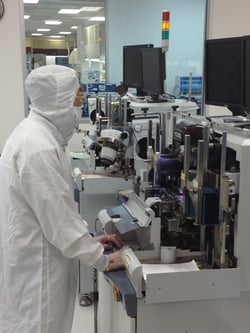August 2020 FAQ: Die Inspection
Integra provides die inspection for millions of die per month.
The following are some of the frequently asked questions:
 Q: What are the major die inspection standards?
Q: What are the major die inspection standards?
A: The following are the major standards:
-
Military 883 Cond A (Class S) & Cond B (Class B)
-
Commercial MAS-2010 2nd Optical Inspection (Commercial)
-
European standards (Requirements same or similar to Mil-Std 883)
-
Customer Specific
Q: What is the main difference between Military and Commercial Die Inspection?
A: Differences:
- Military - Visual inspection criteria for inspecting microcircuit die must comply with MIL-STD-883, Method 2010. Either condition B or condition A.
- Commercial - Visual inspection criteria for inspecting microcircuit die is based on Industry & Military Standards generally acceptable requirements for commercial use.
Q: What are some of the common forms of Defects found in Die Inspection?
A: The following are some typical defects found:
-
Air Bridge: A raised layer of metallization used for interconnection that is isolated from the surface of the semiconductor and/or passivation material. Metallization bridging and where a line of separation is not visible between adjacent metallization traces.
-
Glassivation/Passivation Cracks: Fissures in the glassivation/passivation layer.
-
Passivation: A layer of insulating material that covers the active circuit area including metallization.
-
Glass over metal
-
Glass covering more than 25% of a bond Pad
-
Void in the glass that exposes two adjacent conductive circuit elements.
-
Foreign Material: Any material that is foreign to the microcircuit or package, or any non-foreign material that is displaced from its original or intended position within the microcircuit package. Foreign material considered attached when a gas blow of nitrogen cannot remove it. Foreign material is considered embedded in the glassivation when there is evidence of color fringing around the periphery of the foreign material and it cannot be removed by a gas blow of nitrogen
-
Void: Any region in the metallization, glassivation / passivation or die attach material not caused by a scratch, where there is a complete absence of the relevant material within the designed areas and underlying material is exposed.
-
Chip-out: A chip-out is any section of the die which has broken away from the main body of the die.

